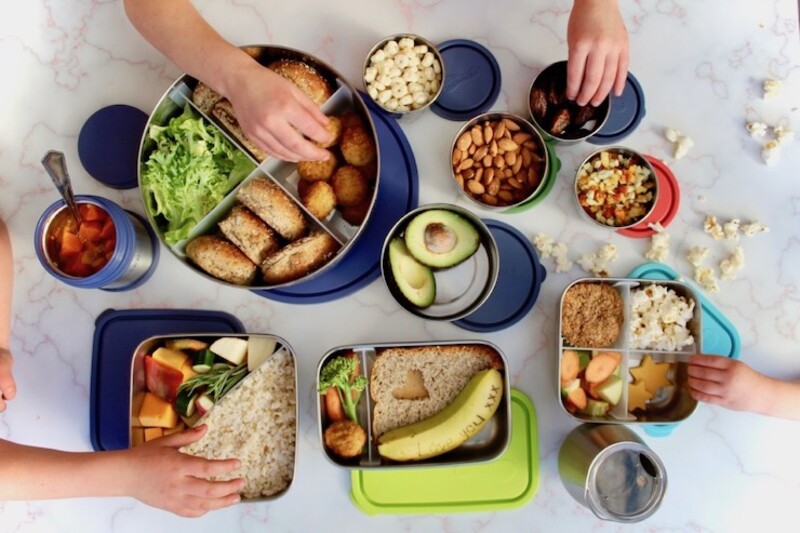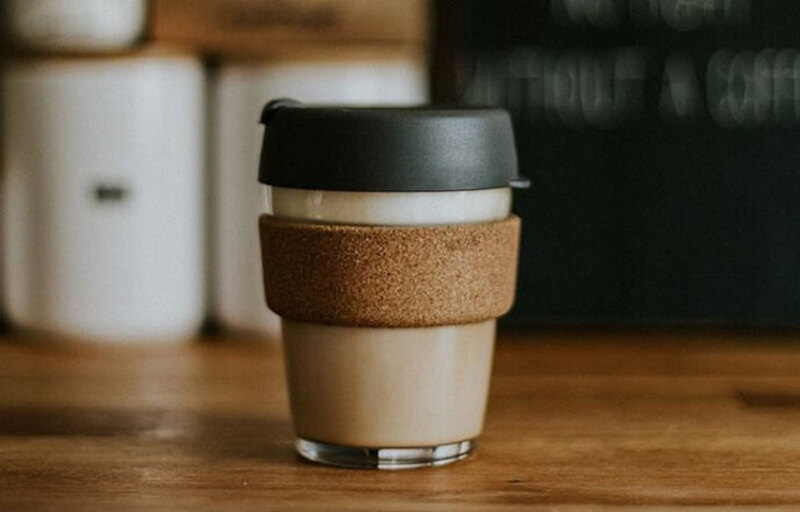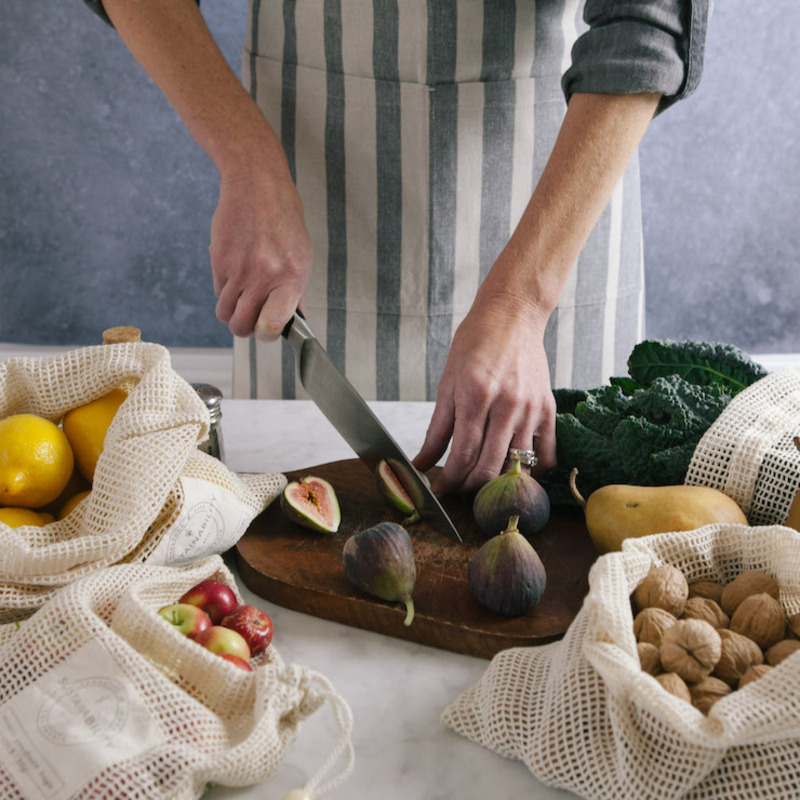Why is it important to reduce plastic?
Plastic, although durable and often convenient, is also one of the most contaminating materials on our planet.
We’ve talked about its negative effects on our environment in our recent #plasticfreejuly article. But, just to recap, here are five main reasons why we should all take plastic problem seriously:
- Its production leads to CO2 emissions which contribute to global warming.
- It pollutes our beaches and oceans, and suffocates marine life.
- It comes back to our food chain in form of microplastics.
- Its recycling rate is extremely low worldwide (12-15%).
- It takes up to 500 years to decompose.
What is single-use plastic?
Single-use plastic is those items that are thrown away right after their one-time usage, often a few minutes after purchase. They can be plastic bags, containers, bottles, cups, or straws, among others.
How to start reducing plastic?
If you’re just starting this journey, here’s one thing you should know: reducing plastic involves lifestyle changes that touch upon all aspects of your lives.
As habit changing is involved, you will need a lot of perseverance and motivation to keep going, but also it’s best to accept you won’t be able to change everything at once right away.
So… My best advice is: start slow and apply the experimental mindset of trial and error.
The good news is that some changes are easier than others and you can apply them immediately to your everyday life.
How? By eliminating one-use plastic.
5 Most Polluting and Common Single-use Plastic Types
Chapter I: Plastic bottles

Plastic type
Most commonly Polyethylene Terephthalate (PET), but also Polypropylene (PP) or High-Density Polyethylene (HDPE)
Why are plastic bottles bad for the environment?
The good news is that plastic bottles are amongst the easiest types of plastic to recycle.
A common misconception though is that a PET bottle becomes another PET bottle. It does not. A bottle is not recycled into another one, unless a new, virgin material is added to it. Usually it is recycled into synthetic materials and can become a polyester carpet for instance. This means it is recycled finite times before it ends up in a landfill.
Although its recycling percentage is higher than other plastic types, in the US in 2018 it was still only 28%. There’s still some percentage of plastic bottles that are exported to other countries (mostly in Southeast Asia) where their faith is unknown.
If a bottle is not recycled, but ends up in our soil or oceans, it takes up to 450 years to decompose.
How to reduce plastic bottles?
Refill Aqua bottle - coming in September 2020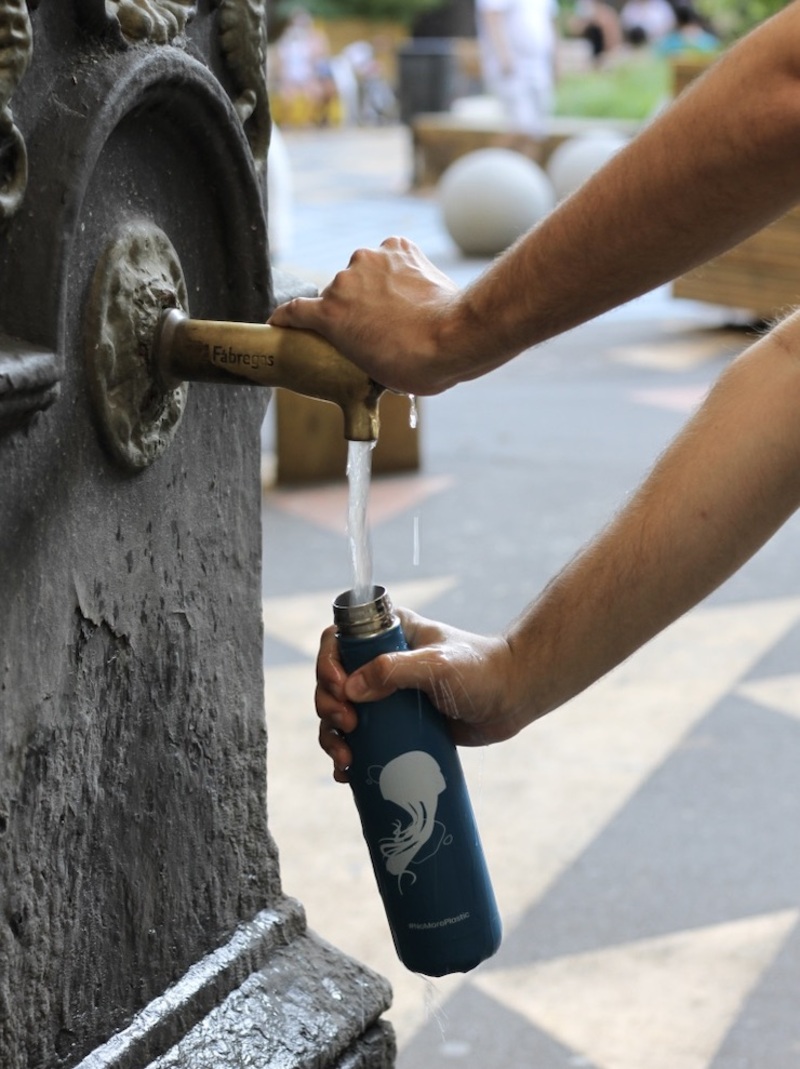
The solution is really easy and it usually involves a one-time investment which saves you money and effort in the long run.
- At home - invest in a water filtration system either one that can be installed on your tap like TappWater or a standalone one such as Ecofiltro. TappWater requires changing the cartridge every few months. It’s made of coconut and it’s compostable. Ecofiltro has a filtration unit which should be changed every two years. There are plenty of other choices on the market, so choose the one that works best for you. Brita filters might be a good change from plastic bottles, but they need their filters changed every few weeks. And those are made of plastic and still produce waste.
- On the go - there are plenty of stainless steel or glass water bottles out there which you can buy once and carry with you everywhere you go. Shameless plug: One of them is our #NoMorePlastic reusable bottle. It maintains hot and cold temperature for 24 hours and contributes to spreading awareness of plastic pollution in Meditarrean.
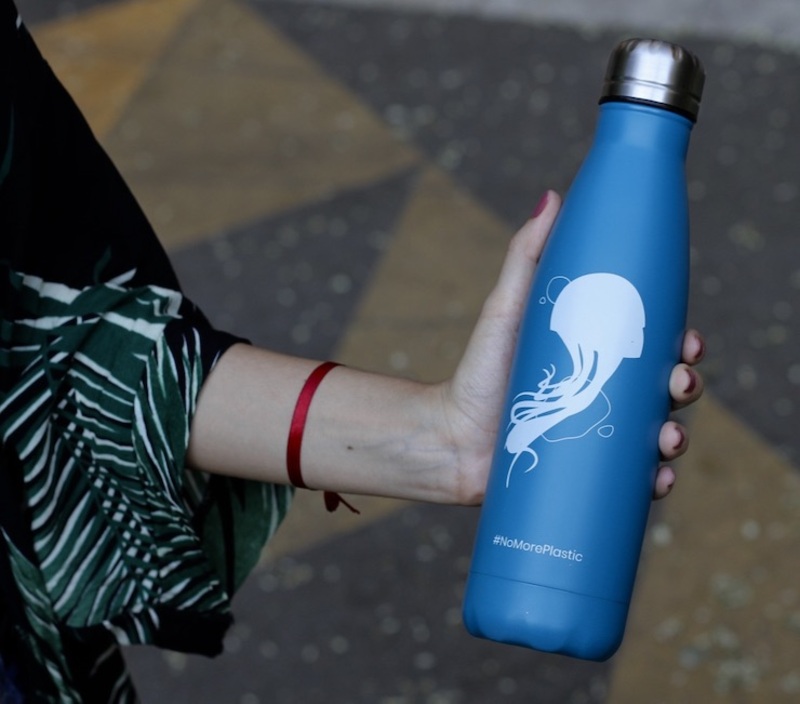
- When traveling - make sure you take your reusable bottle with you and try to refill it on the go. In many countries or cities, you can find water refill stations placed in bars or restaurants or even use public water fountains. Just make sure water at the place you’re traveling to is safe to drink. There are apps that make it easier to find refill points such as our own, Refill Aqua in Barcelona, Refill UK in the United Kingdom, Tap in the US or Refill My Bottle in Asia.
If you cannot avoid buying a plastic bottle on the go, keep it and reuse it. Here are a few ideas:
- Use it to refill shampoo, kitchen or bathroom detergents or other liquids in your nearest zero waste shop.
- Cut the top off and use it as a container for smaller items in your fridge such as stock cubes.
- Keep it for trips to the beach or hikes - it’s always good to bring backup in addition to your reusable water bottle.
- Make art - ok, ok, most of the times things made of plastic bottles look tacky, but look at this wall art made of bottle caps:
Chapter II: Plastic straws

Plastic type
Polypropylene (PP).
Why are plastic straws bad for the environment?
500 million plastic straws are used every day in the US alone. A study showed that a staggering amount of 8.3 billions straws pollute the world’s beaches which poses a serious threat to our marine life (I’m sure you saw a video of a turtle with a plastic straw stuck in its nostril).
Straws are not biodegradable and it takes them around 200 years to decompose. They break into millions of microplastics which are harmful to animals and us staying in our ecosystem forever.
How to reduce plastic straws?
Bamboo straws from Reusable Superstore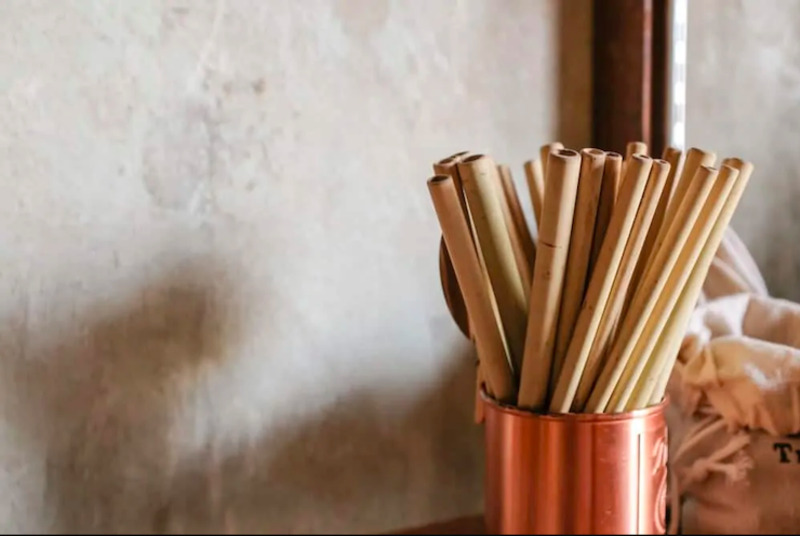
There are two ways to go about it:
- Refuse the straw upfront - I have to admit this isn’t easy because most of the times you simply forget. When ordering water or soda, by default I never expect to get it with a straw. Then it comes and it frustrates the heck out of me, but it’s too late. I think it just takes practice and eventually becomes a habit. Quick tip: before sitting down at your table, look around and try to spot how other people’s drinks are being served. If you notice straws, you’ll remember to refuse them.
- Bring your own - there are plenty of eco-friendly alternatives for plastic straws including the ones made of bamboo, glass, or metal. They usually come with a little brush to clean them. If you like your drinks with a straw, it might be worth a little investment. Also, since it’s so small, it fits into any bag or backpack.
Chapter III: Plastic containers

Plastic type
Polystyrene (PS), Polypropylene (PP)
Why are plastic containers bad for the environment?
Only around 12% of polystyrene is recycled but it's often easier and cheaper to produce new polystyrene than it is to collect, transport and process it for recycling. If not recycled, just like plastic bottles, it may take up to 450 years for it to decompose.
When exposed to hot and oily food, polystyrene may leach styrene considered as a brain and nervous system toxicant. It could also affect our health (genes, lungs, liver, and immune system).
How to reduce plastic containers?
Unlike plastic bottles and cups, containers might be harder to avoid, because often they involve lifestyle changes like reducing ordering takeout or buying meat and fish over the counter.
BUT, it’s all doable. Here are some tips:
When ordering takeaway food
In Barcelona, we have several food delivery apps (Glovo, Uber Eats, Deliveroo), yet none of them tells you what packaging your food will come in. It’s the matter of trial and error until you learn which restaurants offer more eco-friendly packaging. I see a few solutions:
- Research - before making your order, call the restaurant and ask them about packaging. Is it compostable? (carton, or plant-based materials) or does it come in plastic? Unfortunately since very few places (depending on where you’re based) offer eco-friendly alternatives, there’s a possibility you will be disappointed and will have to make a choice: do I still order it if it comes in plastic or do I let go?
- Go for what you know - I have a few tested options in Barcelona and often keep re-ordering from the same places that I know offer compostable packaging. So if you do crave takeout, go for the safe options. Pizza is always one of them, although it tends to come with tiny “tables for rats” as I call them. If you want to avoid those, say so when you order!
- Bring your own containers - in case you’re ordering on the spot to take your food away, make sure you bring your own reusable containers. My favorite place around the corner, Makan Makan, allows me to do that. I have both glass and stainless steel containers I use for supermarket shopping, storing food in the fridge, and takeout.
- Order less - if you’re a big fan of ordering in, this one is the hardest. Since my partner I work from home, we do order take out once or twice a week. It used to be more often than that, but knowing the plastic waste we might generate, we minimized it. Instead, we buy in bulk and freeze to prepare quick lunches during the day.
When buying meat or fish at the supermarket
A simple remedy to this is to start buying those items at the counter of your market. You can always ask them not to use a styrofoam tray or better, bring your own container. Ask in advance if your supermarket allows those, but usually it’s ok as long as it’s transparent, has a lid, and is clean. Avoid buying meat in the refrigeration section, as those will most definitely come on trays.
When buying fruits and vegetables
The biggest irony I see in supermarkets are eco-friendly, bio fruits or veggies that come on styrofoam trays and are wrapped in tons of plastic. I stay away from them buying most of my fruits at local farmers markets. In some rare cases their packaging may be plant-based. When in doubt, ask!
Chapter IV: Plastic coffee or tea cups

Plastic type
Extruded polystyrene foam (XPS) or Polypropylene (PP).
Why are plastic coffee and tea cups bad for the environment?
16 billion disposable coffee cups are used each year. In case of styrofoam, Americans alone throw away around 25 billion of those every year.
They are coated with plastic on the inside and use plastic lids. It takes them a similar amount of time to decompose as plastic bottles, up to 500 years.
How to reduce plastic coffee or tea cups?
I think this one largely depends on the culture of the place you live. I know in some corners of the world, every morning routine starts with stopping by at a coffee shop and getting a takeaway cup of coffee.
I think a solution is quite easy and long term:
- Invest in your own reusable cup - there are plenty of alternatives out there like this silicone collapsible cup or these glass ones. They are sturdy, easy to travel with, and will be with you for several years.
- When going to a coffee shop - ask if you can bring your own. Many places offer discounts for your own cup!
- Why not brew coffee at home? - I get that it might be time-saving to buy your coffee on the go, but there’s also a financial and quality aspect. For the amount of money you spend monthly on takeaway coffee, you can buy premium quality coffee (I buy mine at Ecolectia - it’s fair trade and comes in paper bags). Also, you can invest in a simple aeropress or french press. It takes only a few minutes and then you transfer it to your reusable cup and off you go!
Chapter V: Plastic bags

Plastic type
Low-Density Polyethylene (LDPE).
Why are plastic bags bad for the environment?
To start with, LDPE plastic is also used as coating for the milk and juice cartons as well as for frozen food bags and garbage bags. So, if you’re buying cartons of milk or juice thinking they are a descend alternative, know that they are also lined with plastic.
Although single-use plastic bags are banned in more than 70 countries around the world (20 of which are in Africa), we still collectively use around 500 billion of them every year. That’s 150 bags per person, per year, for every single person on Earth! It’s enough to circle the globe 4,200 times.
The average lifespan of a plastic bag is only 12 minutes. Once disposed of, they often clog the sewage drains or end up in landfills where it takes them up to 20 years to decompose. They are also lethal to marine life which can easily get entangled in them.
How to reduce plastic bags?
- Learn to always refuse it when shopping - I find this one easier to anticipate than straws as you usually clearly see someone reaching for one. Then it’s simple to say: “No, thank you. I have my own”.
- When going out of home - I think it’s best to always have one or even a bunch of tote bags folded in your other bag or backpack. You never know when you pop by to a store and spontaneous trips to the grocery shop will most definitely cost you extra plastic. When going grocery shopping, take a bunch of tote and produce bags, and stuff them inside a bigger one.
- When buying fruits and vegetables - when possible, try to buy your fresh produce at the market where it’s generally easier to avoid plastic. When at the supermarket, invest in produce bags like these and weigh your products in them. If you forget to take them with you, you can always weigh all your fruits or veggies without a bag and put a sticker on one of the items.
- When you forget your reusable bags - yup, it happens, even when you try. First, ask for a paper bag alternative. I’ve noticed that many times clerks give you a plastic one by default while there’s a paper one right next to them. If you still end up with a plastic bag, just keep it and reuse it. They are useful for packing shoes, taking to the beach to hold a wet swimming suit, or lining trash cans.
And that’s a wrap!
Does it take a few lifestyle adjustments to avoid all this plastic? Yes, it does.
Is it worth it? Absolutely.
Just think about the impact you’re making only by reducing one of these plastic types (e.g. bottles). If you drink takeout coffee at least 3 times a week, you can save ~150 disposable cups in a year. That’s something.
Remember, the change starts with every single one of us.

Marta Olszewska
Co-founder of Refill Aqua striving to reduce single-use plastic waste. Marta is also a marketing consultant and growth mentor helping startups tell better stories through content.

